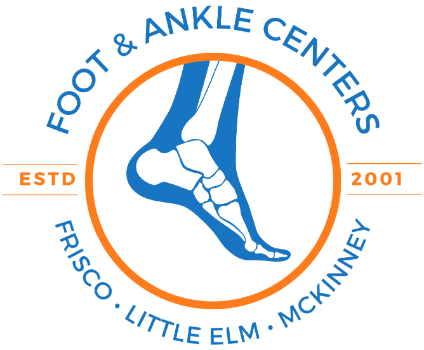Heal from within: PRP Therapy at Foot and Ankle Centers
Tuesday, July 01, 2025 | By: Foot & Ankle Centers of Frisco and Plano
Did you know that your body has an incredible healing ability that can be harnessed to recover from injuries? Platelet-Rich Plasma (PRP) Therapy is a revolutionary treatment that leverages your own body's resources to promote healing. In this post, we will explore how PRP therapy can help you recover from various foot and ankle conditions, what the procedure involves, its benefits compared to traditional treatments, and how incorporating PRP therapy into your recovery plan can accelerate your healing process. Discover how to let your body do the healing, naturally!
Understanding PRP Therapy: A Revolutionary Healing Method
What is PRP Therapy?
Platelet-Rich Plasma therapy, commonly referred to as PRP therapy, is an innovative medical treatment that utilizes the body's own healing mechanisms to repair damaged or injured tissues. It has gained traction in various fields, especially in orthopedics and sports medicine, for its effectiveness in treating chronic pain and injuries.
The Science Behind PRP Therapy
The basis of PRP therapy lies in the use of platelets — a type of blood cell involved in healing. Platelets contain growth factors that are essential for repairing tissue, making them a valuable resource in the healing process. The PRP process begins with a blood draw from the patient. Once the blood is drawn, it is placed in a centrifuge to separate the platelets from the other components of the blood.
Steps Involved in PRP Therapy
1. Blood Draw: A small amount of your blood is drawn, similar to a standard blood test. This initial step is quick and generally requires a few minutes.
2. Centrifugation: The drawn blood is then processed in a centrifuge. This machine spins the blood at high speeds, causing the denser red blood cells to separate from the plasma, which contains the platelets.
3. Concentration of Platelets: The resulting plasma is rich in platelets, which are concentrated to form the PRP.
4. Injection: The concentrated PRP is then injected into the affected area, where the injury exists. This injection usually occurs in a sterile environment and is guided by imaging techniques like ultrasound for precision.
Conditions Treated with PRP Therapy
PRP therapy is particularly effective for various foot and ankle issues, including but not limited to:
- Chronic tendonitis
- Ligament injuries
- Osteoarthritis
- Plantar fasciitis
- Achilles tendon injuries
- Sports-related injuries
Benefits of PRP Therapy
Accelerated Healing
Studies have shown that patients who undergo PRP therapy often experience faster recovery times compared to those who rely solely on traditional treatments. The growth factors in platelets stimulate the healing process and help restore normal function quickly.
Fewer Side Effects
Since PRP therapy uses your body's own blood, the risk of allergic reactions or complications from foreign substances is significantly reduced. Patients generally report fewer side effects compared to invasive surgical options.
Convenience and Recovery Time
Most PRP procedures are minimally invasive, allowing for same-day treatment and minimal downtime. Patients can often resume normal activities within a short period, making it highly accessible for people with busy lifestyles.
Comparing PRP Therapy to Traditional Treatments
When considering treatment options, it’s essential to compare how PRP therapy stacks up against traditional methods such as surgery or corticosteroid injections.
Surgical Interventions
While surgery can be necessary for severe injuries, it typically involves longer recovery times, risks associated with anesthesia, and potential complications. In contrast, PRP therapy offers a non-surgical alternative that focuses on promoting the body’s natural healing capabilities.
Corticosteroid Injections
Corticosteroid injections can provide immediate relief but often come with adverse long-term effects such as joint weakening and infection risks. PRP therapy, however, targets the root cause of pain and injury by promoting recovery rather than merely masking symptoms.
What to Expect During the Procedure
If you’re considering PRP therapy, here’s what you should anticipate during your visit:
1. Consultation: Initial discussions with your healthcare provider will involve evaluating your specific condition and determining whether PRP therapy is suitable for you.
2. Preparation: On the day of the procedure, you’ll be taken to a treatment room where your blood will be drawn.
3. Injection: After the PRP is prepared, the clinician may use imaging guidance to ensure accurate injection into the injury site. The whole process is relatively quick, typically taking between 1-2 hours.
Aftercare and Recovery
Post-Procedure Instructions
After receiving your PRP injection, it’s essential to follow specific aftercare instructions to maximize your recovery:
- Rest the injected area for the first 48 hours.
- Avoid strenuous activities for at least a week to help the healing process.
- Gradually increase activity as advised by your clinician.
The Outlook on PRP Therapy
As research continues, PRP therapy is being recognized for its potential to change the way we think about healing from injuries, particularly in sports and orthopedic medicine. Many athletes and patients alike are turning to this powerful treatment for relief and recovery — and with good reason.
So Now What?
As we’ve discussed, PRP therapy is a groundbreaking treatment that harnesses your body’s natural healing abilities. With fewer side effects and faster recovery times, many individuals are finding hope in this innovative solution for foot and ankle injuries.
If you’re suffering from chronic pain or injuries, it could be the right time to explore PRP therapy further.


Leave a comment
0 Comments